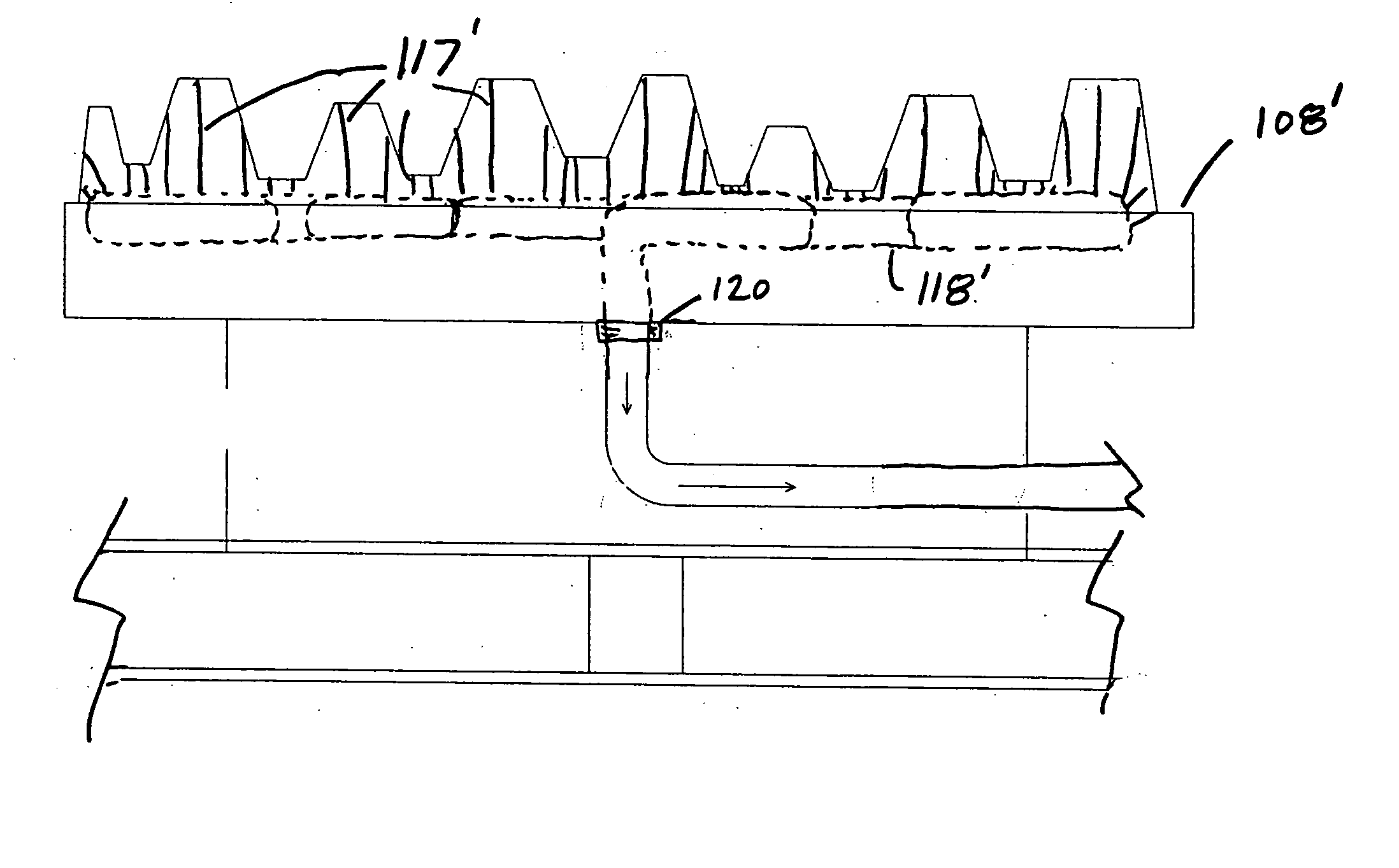Thermoforming method and apparatus
a vacuum forming and thermoplastic technology, applied in the field of thermoforming, can solve the problems of inability to provide uniform temperature across the mold, the coolant line is a significant the coolant line is a common obstacle to the formation of vacuum holes, so as to reduce the need for conventional coolant lines, reduce cycle time, and simple and effective thermoforming
- Summary
- Abstract
- Description
- Claims
- Application Information
AI Technical Summary
Benefits of technology
Problems solved by technology
Method used
Image
Examples
first alternative embodiment
IV. First Alternative Embodiment
[0058] A first alternative embodiment of the present invention is shown in FIGS. 13 and 14. This embodiment includes most of the same components of the preferred embodiment, except the drive assembly. The hydraulic cylinders 264a-d are similar to the hydraulic cylinders of the preferred embodiment, except that the rams 265a-d preferably are telescoping and that the carriage 272 is fixed to the carriage supports 273a-d, a distance below the tops of the supports 278a-d. In operation, the mold 208 is lifted in unison by the hydraulic telescoping cylinders 264a-d to engage a sheet 104 supported on the rack 202b in a manner identical to that of the preferred embodiment. The mold 208 is shown in the raised position in FIG. 13 in phantom lines. When the mold208 is withdrawn with the sheet 104 vacuum drawn against it, rather than rotating, the carriage platen 272 is drawn downward in unison by the hydraulic cylinders 264a-d, until as shown in phantom lines in...
second alternative embodiment
V. Second Alternative Embodiment
[0059] A second alternative embodiment of the present invention is shown in FIG. 15. The forming apparatus shown in FIG. 15 generally includes an inverted mold 308 mounted to carriage 372 which is further mounted to inverted hydraulic cylinders 364a-d. In operation, the hydraulic cylinders lower carriage 372 and mold 308 down through rack arm 302b so that the sheet 104 may be drawn against the mold 308 as described in the preferred embodiment. The carriage 372 is further descended in unison by the hydraulic cylinders 364a-d so that the mold 308 and sheet 104 associated with it are positioned in the quenching tank 313 where the liquid 314 is permitted to cool the sheet 104. The mold 108 is shown in the fully lowered position in FIG. 15 in phantom lines. Once the sheet 104 is sufficiently cooled it may be withdrawn on the mold 308 via the hydraulic cylinders 364a-d. The sheet 104 may be removed from the mold with any of the techniques described in conne...
third alternative embodiment
VI. Third Alternative Embodiment
[0060] A third alternative embodiment is shown in FIG. 16. As shown in FIG. 16, the forming apparatus generally includes an inverted mold 408 similar to the inverted mold of the second alternative embodiment. The mold 408 is mounted to a carriage 472 which is further mounted to inverted hydraulic cylinders 464a-d. Actuation of the cylinders 464a-d moves the mold vertically between a first position shown in solid lines in FIG. 16 and a second position shown in phantom lines in FIG. 16. In addition, the reservoir 413 of the quench 410 is mounted to a plurality of vertically extending hydraulic cylinders 450a-d. As shown, the reservoir 413 is conventionally mounted to the cylinders 450a-d such that the bottom surface 452 of the reservoir rests on top of the cylinders 450a-d. Alternatively, the quench may be mounted to a carriage similar to the carriage 472, or otherwise conventionally attached to the cylinders 450a-d. The cylinders 450a-d can be actuated...
PUM
| Property | Measurement | Unit |
|---|---|---|
| perimeter | aaaaa | aaaaa |
| size | aaaaa | aaaaa |
| temperature | aaaaa | aaaaa |
Abstract
Description
Claims
Application Information
 Login to View More
Login to View More - R&D
- Intellectual Property
- Life Sciences
- Materials
- Tech Scout
- Unparalleled Data Quality
- Higher Quality Content
- 60% Fewer Hallucinations
Browse by: Latest US Patents, China's latest patents, Technical Efficacy Thesaurus, Application Domain, Technology Topic, Popular Technical Reports.
© 2025 PatSnap. All rights reserved.Legal|Privacy policy|Modern Slavery Act Transparency Statement|Sitemap|About US| Contact US: help@patsnap.com



